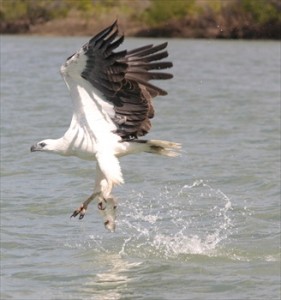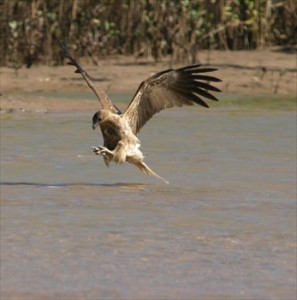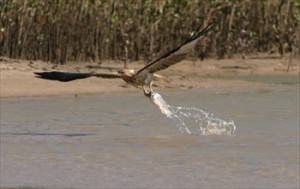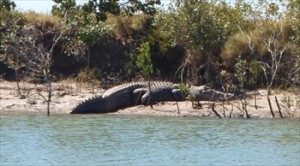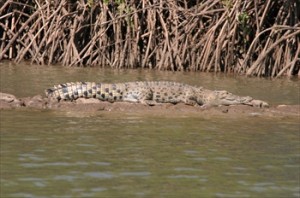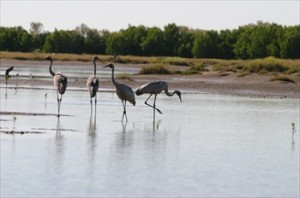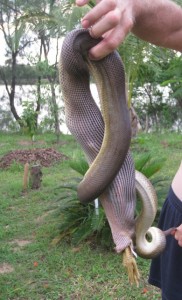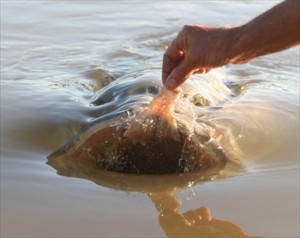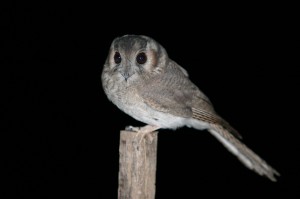The McArthur Region is a tough environment for flora and fauna. A long dry season, with long days of searing sun, cool nights and almost no moisture is followed by the hot, humid rainy and sometimes cyclonic wet season. The area’s native plants and animals are well adapted to cope with this environment.
There is a large variety of bird life, but a keen eye is needed to spot and appreciate some of the smaller breeds as they often don’t travel far from the cover of long grass and thick bushes. Early morning and evening is feeding time and the best opportunity to spot some of the more skittish breeds.
The following pictures are just a small sample of the wildlife and flora of the region.
What a sight! The enormous and beautiful Sea Eagle swoops down near your boat to catch a fresh lunch. Sea Eagles are a common sight in the area.
Not wishing to be outdone, the Whistling Kite puts on it’s own show.
Unfortunately swimming in the river is not recommended. We live in harmony with the crocodiles by leaving the swimming to them.
The Brolga is one of two types of Crane found in Australia, while the Jabiru is Australia’s only member of the Stork family. Both of these beautiful birds are found in abundance in the McArthur River area.
Naturally, snakes are also fairly common in our area. Like most wildlife if they are left alone, they go about their business and let us go about ours. The python on the left managed to get into a chook shed at one of the KAB residences. Having swallowed a chook, it could not escape. The snake was released unharmed. Unfortunately the chook did not survive the ordeal. The tree snake on the right got caught in a cast net left out to dry. He also was released unharmed.
The Groper is responsible for many a ‘one that got away’ fishing tale.
A group of very large Groper regularly spend time in the shallows near our un-powered camp area. With care, it is sometimes possible to feed these magnificent sea monsters by hand.
The Australian Owlet -Nightjar (left) is one of a number of owls active at night. Along with the Double – barred finch, the Crimson Finch (right) are the most common of the finches found in our area. These ones are enjoying a cool bath on a hot day.

